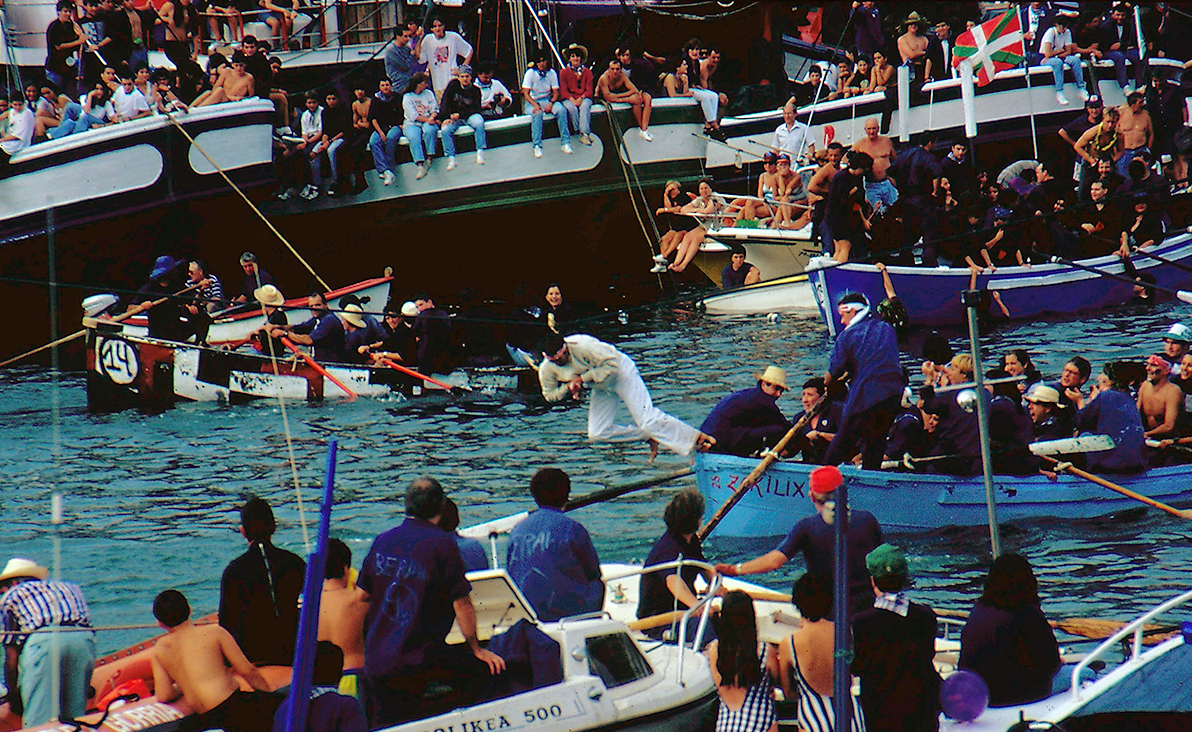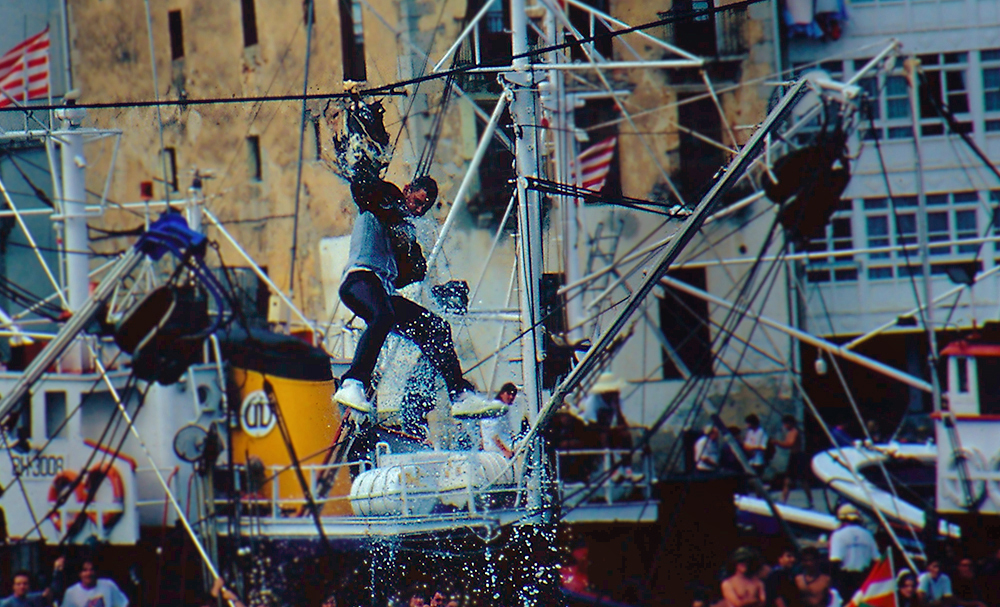Basque ethnography at a glance

Day of the geese. Lekeitio (Bizkaia), 1995. José Ignacio García Muñoz.
Saint Roch and Saint Antoninus were the patron saints of the fishing port of Lekeitio, in Bizkaia, up to the 18th century, when the papacy asked for patronal festivals to be reduced and a random drawing finally tipped the balance in favour of the latter. St Antoninus’ Day is celebrated on 2 September, controversial goose pulling, on 5 September, having taken over as the big attraction among visitors who flood in to enjoy the numerous events that take place during the feast days.
A goose drenched in grease is fastened to a rope stretching across the harbour from dock to dock. Sailing on separate boats, contestants attempt to grab the bird by the neck while a group of youth pull the rope and then let it loose to swiftly raise and lower them. Whoever gets raised most times and pulls the head off the bird wins.
The feast starts at noon, participants are weighed and the starting order for boats determined by drawing lots; the competition itself is held in the afternoon.

Goose pulling. Lekeitio (Bizkaia), 1995. José Ignacio García Muñoz.
Not many more than a dozen local fishermen would once take part in the competition, but today participation is open to all, men and women alike as from 1978, city neighbours being given preference. More than 80 teams participate annually in recent times, and the event is now a mass spectacle.
Live geese were used for the game back in the old days. To prevent animal suffering, geese were substituted by a kind of ball in 1922. The change was not welcomed, and dead geese replaced live ones, which also failed to satisfy general expectations and meant a reversion to primitive live-goose pulling. Dead birds were adopted again in the 1960s, and live ones returned for the following decade, before they were definitely prohibited in 1986. Rubber geese were introduced for the very first time in 2006, and thereon each team chooses to compete with either a dead or a rubber goose.
Walking the greasy pole is another form of entertainment on the day, with competitors walking along a well-greased pole placed horizontally over the water in an effort to reach a Basque flag tied to the far end.
Although more deeply rooted and renowned in Lekeitio, the ancient tradition of pulling the goose is likewise observed in other localities of the Basque Country.
Segundo Oar-Arteta – Etniker Bizkaia – Etniker Euskalerria Groups
Translated by Jaione Bilbao – Ethnography Department – Labayru Fundazioa

